It may not look like much. A magnifying glass and an empty field. But eCommerce site search can make or break your customers’ online shopping experience. This is particularly true—and critical—for retailers with thousands of SKUs. When your search experience isn’t optimized, searching for a product can be akin to finding a needle in a haystack. A long, fruitless search will send shoppers running to your competitors’ sites, and they’ll remember the frustration they felt shopping with your brand.

Google and Amazon have created a generation of shoppers who not only regularly use a website’s search functionality, but also have high expectations of it. These mission-driven shoppers are also ready to spend: 30% of eCommerce site visitors use search, but conversion rates for search users can be 50% higher than average.
Despite this obvious opportunity to drive revenue from high-intent shoppers while creating a better customer experience, many eCommerce websites fail to provide optimized search experiences: 61% don’t support product synonyms, 46% don’t support thematic searches (e.g. “winter jackets”), 32% don’t support symbols, 27% don’t support misspellings, and that’s just the tip of the iceberg.
Fortunately, as brands and retailers compete to improve UX and better support their customers, we are now seeing industry leaders make strides in improving eCommerce site search by using natural language processing and AI to decipher queries and deliver more accurate results. One opportunity for optimization that often goes overlooked, however, is faceted search.
Faceted Search Defined
What is faceted search? It is a technique that augments traditional search functions with a faceted navigation system. Faceted search allows shoppers to narrow down the number of search results using multiple dimensions (facets) to get to the desired item or product.
Like filters, facets pertain to various elements of an item — for example, color, size, length, style, price, or occasion — but they are more dynamic, specific, and relative to the set of search results being viewed at the moment.
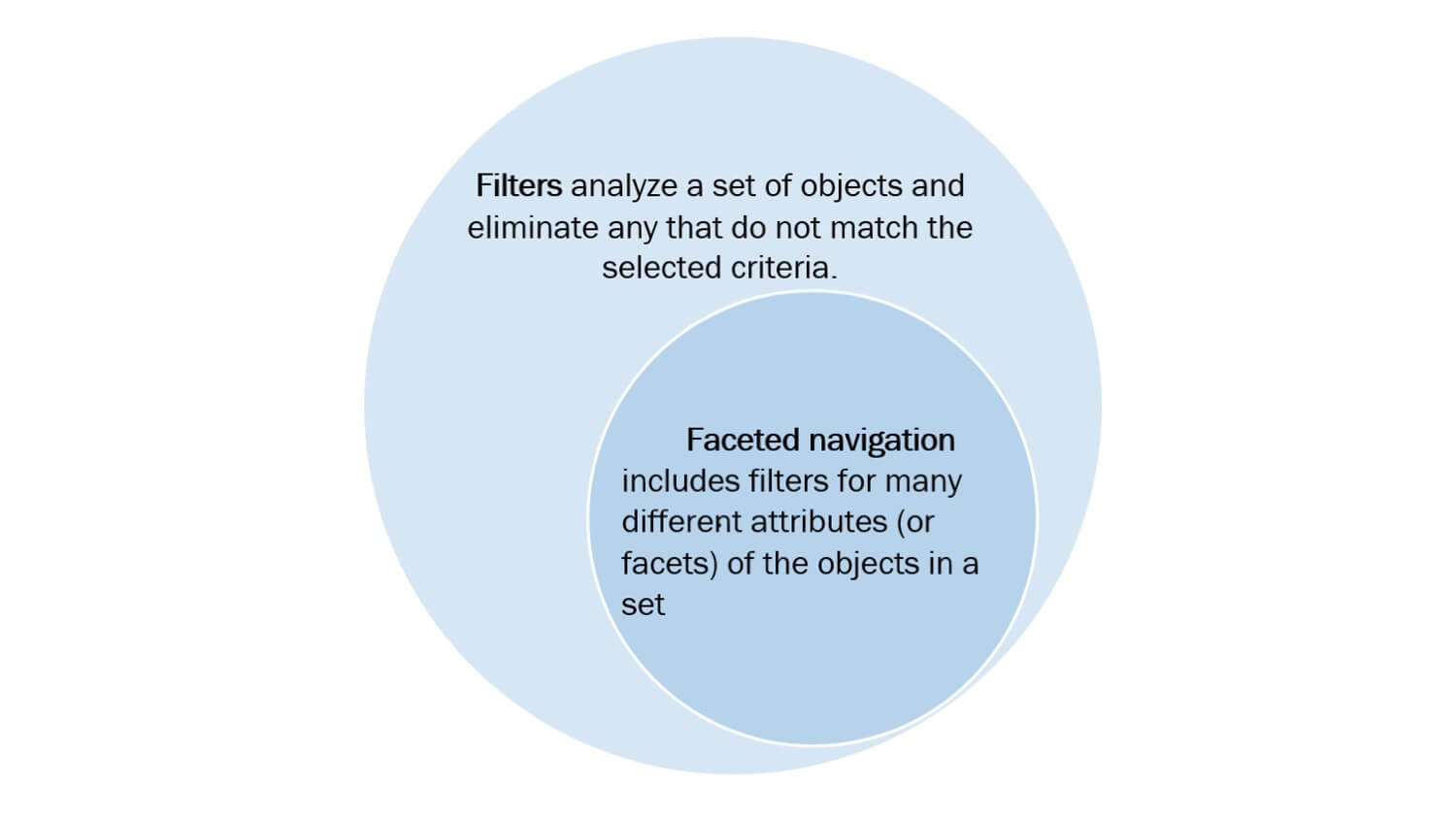
An illustration showing how faceted search or navigation relates to filters. [Source]
In eCommerce, faceted search not only makes it easier for shoppers to specify what they’re looking for, but it also shows them all the available options and product information that they may not have any knowledge of. This way, customers can gain a better understanding of your products and how data is structured in your catalogue.
Moreover, for high-intent shoppers who use the search function, faceted navigation can connect them faster to the products they have in mind, bringing them one step closer to purchasing and leaving them with a positive experience.
How Faceted Search Improves the Online Shopping Experience
Faceted search is the foundation of contextual filters, making it an essential feature of eCommerce site search. But only 40% of websites have it. Here are some of the key ways that faceted search improves your customers’ online shopping experience.
· Show shoppers what your catalogue offers
For shoppers who know what they want, faceted search enables them to narrow down search results according to the most relevant attributes. For those who are not sure of what they’re looking for, faceted search serves as a guide that enables them to understand your catalogue, while giving them ideas for how to navigate through your products.
· Customize search based on attributes
In a brick-and-mortar store, a sales associate might ask shoppers a series of questions to better understand their needs. For example, if a customer is looking for jeans, the associate will likely ask which color and cut they’re after. On your website, faceted search can perform this function when search results are overwhelming. The available attributes or filters are tailored based on the search query, and then shoppers can use them to customize the remaining selection of products.

· Reduce the need for multiple searches
With faceted search, customers can explore products by applying multiple facets or filters. The experience is more intuitive because the search results immediately reflect the selected attributes. This eliminates the need to enter another search query and ensures that shoppers encounter less friction throughout the product discovery experience.
· Make large inventories more manageable with faceted search
Consumers don’t have the time or patience to browse through hundreds or thousands of products. Faceted search provides them with more control and helps them make better decisions as they search. Since faceted search filters are fed by product tags, it also gives brands an additional incentive to ensure merchandising is consistent and detailed so that the right products are presented at the right time.
Faceted Search Examples and Best Practices
It’s important to note that faceted search is not a fit for all types of eCommerce sites. Those with very limited inventory likely won’t need additional filters on category pages or search results.
However, faceted search is a must and is most effective when implemented on eCommerce websites with a large inventory. In these cases, it prevents shoppers from flipping through dozens of pages of products without finding what they’re looking for.
Let’s take a look at a couple of examples of faceted search in action:
· Venca
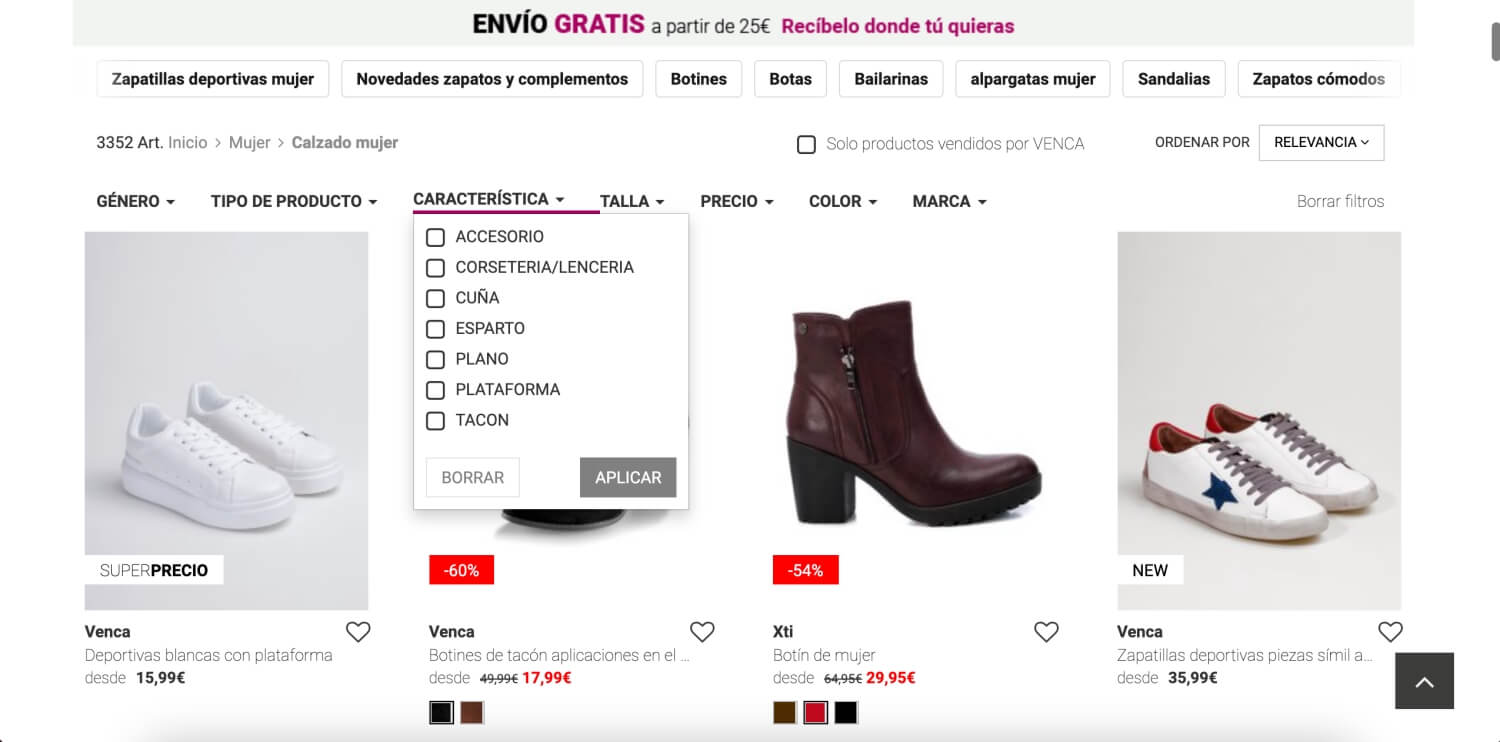
Spanish retailer Venca makes sure that their faceted navigation is highly relevant to what shoppers are currently looking at. In this case, when searching for shoes on their website, the facets pertain to various shoe attributes, including types of heels, styles of straps, and more. The retailer also uses natural language that customers are familiar with.
· 3suisses
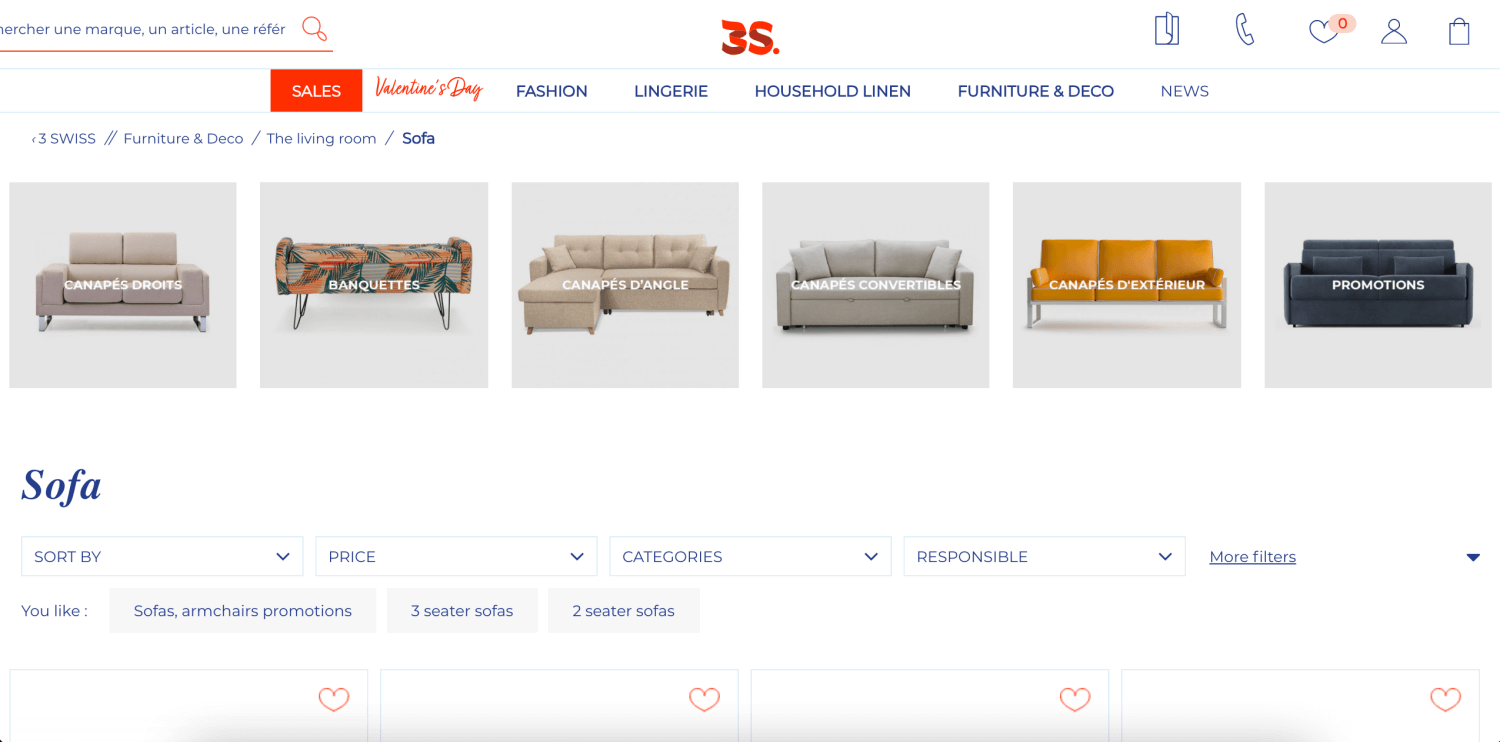
French retailer 3suisses has a variety of filters, but to avoid overwhelming shoppers with choice, they highlight frequently used attributes and keep the others hidden until shoppers click for “more filters.” Moreover, the retailer opted for image-based navigation to guide shoppers and make it easy for them to distinguish between different types of materials as well as visualize the styles filters refer to.
· Rinascimento
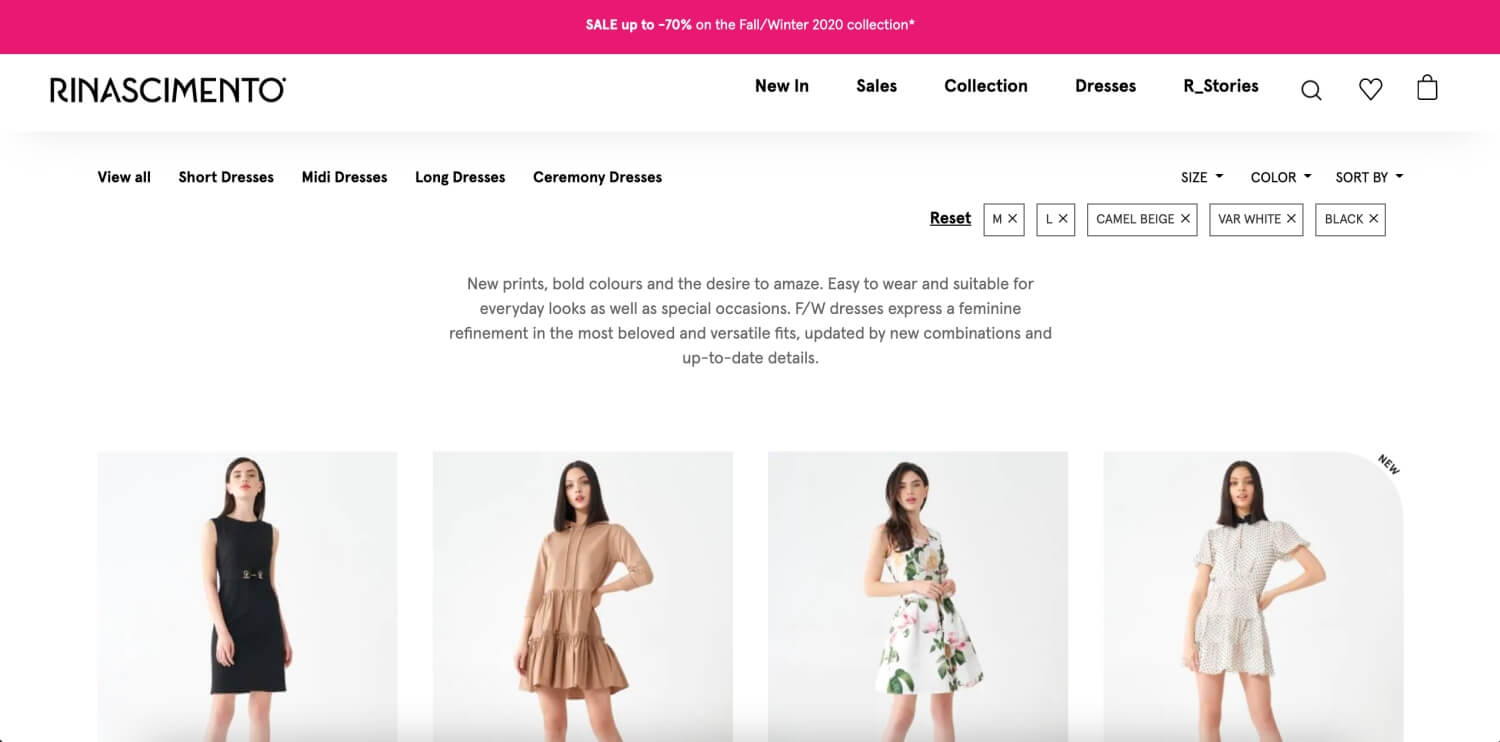
Italian fashion brand Rinascimento enables shoppers to filter products by selecting multiple attributes. To eliminate dead-ends, they also remove options for which there are no corresponding products. Another way to do this would be to grey-out irrelevant options. Rinascimento’s search is particularly powerful as it allows for thematic searching (e.g. “ceremony dresses”) and it makes it quick and easy for shoppers to remove any filters they no longer wish to use.
· Otto
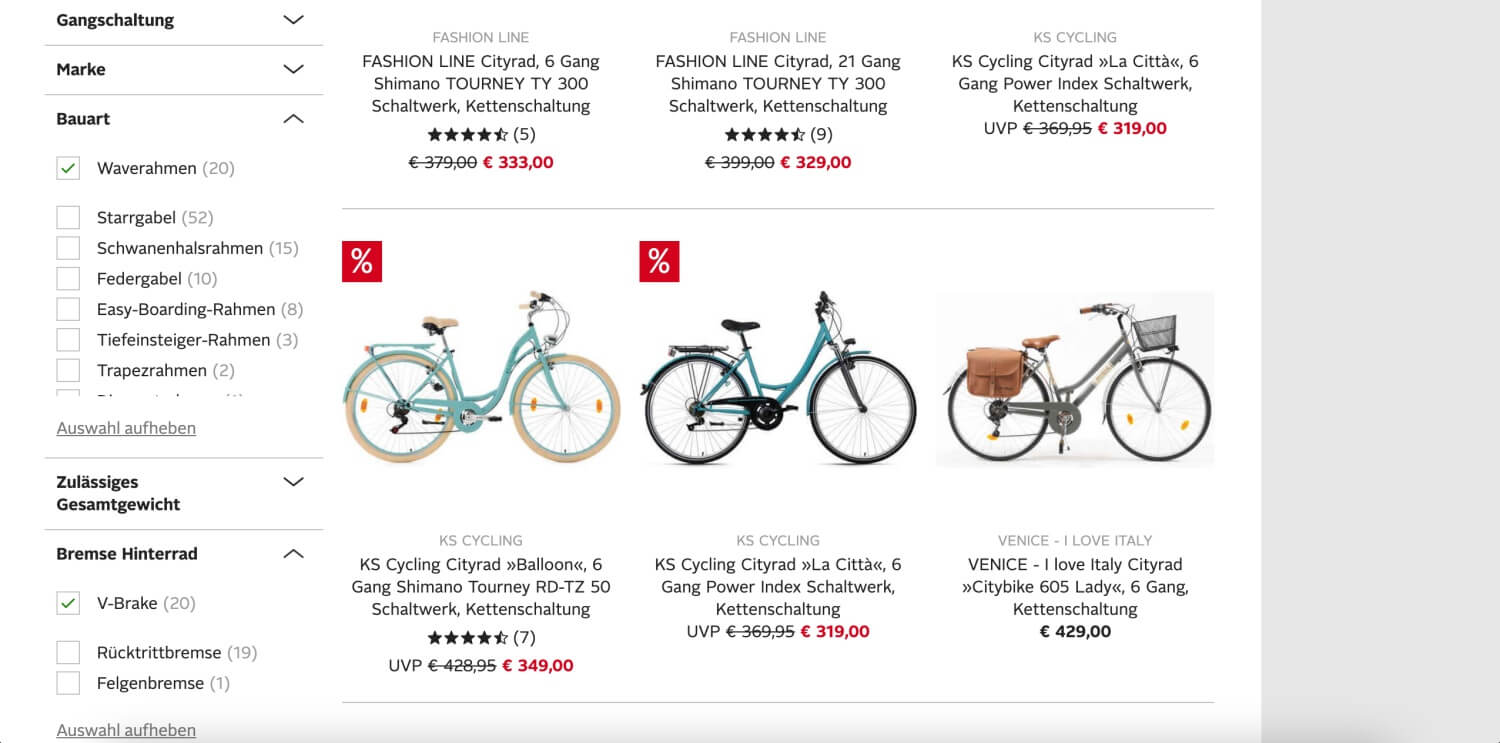
Like 3suisses, Otto has numerous filters that are educational, product-specific, and very detailed, so shoppers can seamlessly refine their search. The retailer also shows the number of matches next to facets, so customers know what to expect when they select an attribute. Most of the filter groups are also in a collapsible menu to avoid overwhelming shoppers.
· White Rose Fashion
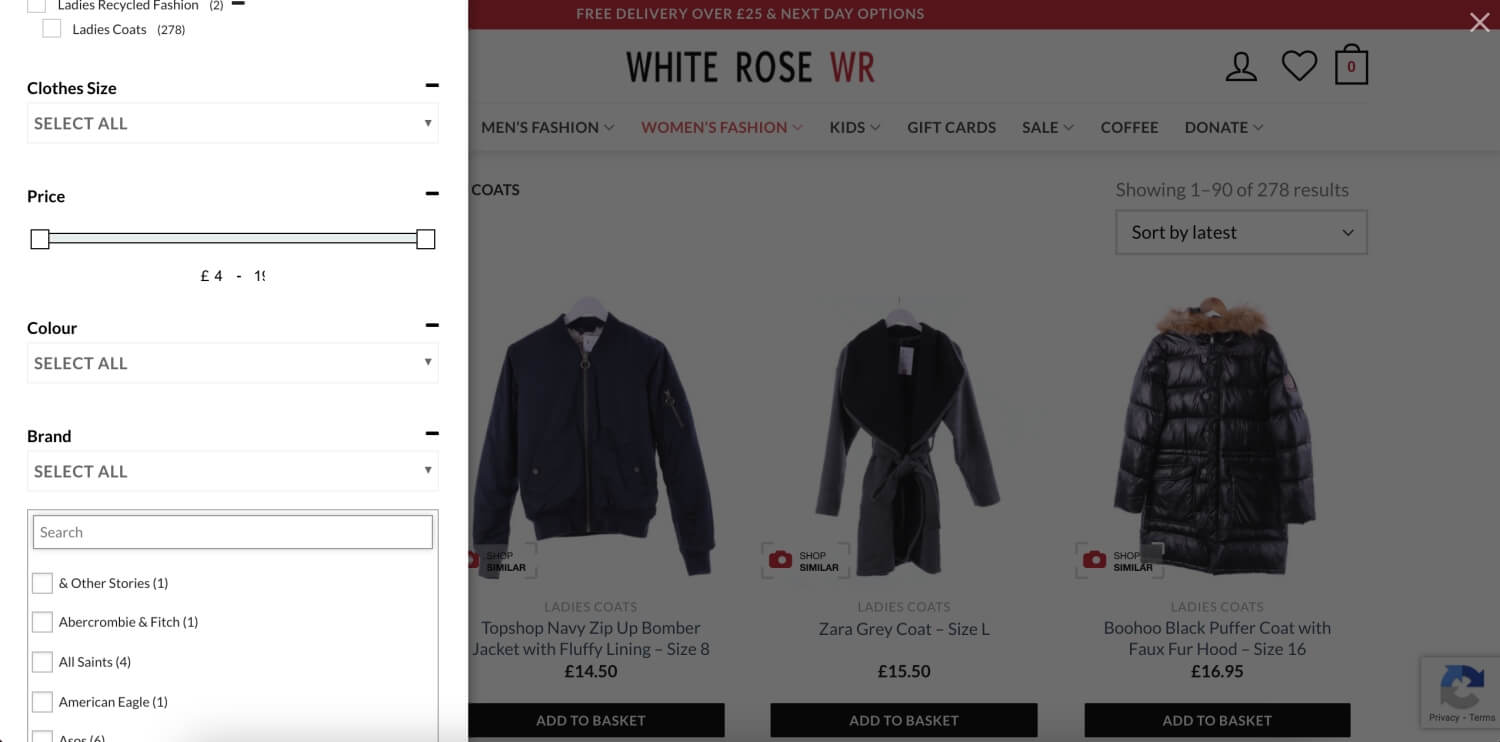
Second-hand retailer White Rose enables shoppers to search within a facet category. For example, they can search among the fashion brands that White Rose carries. This is great for shoppers who are loyal to a brand or those that have a specific brand in mind.
· Mobly
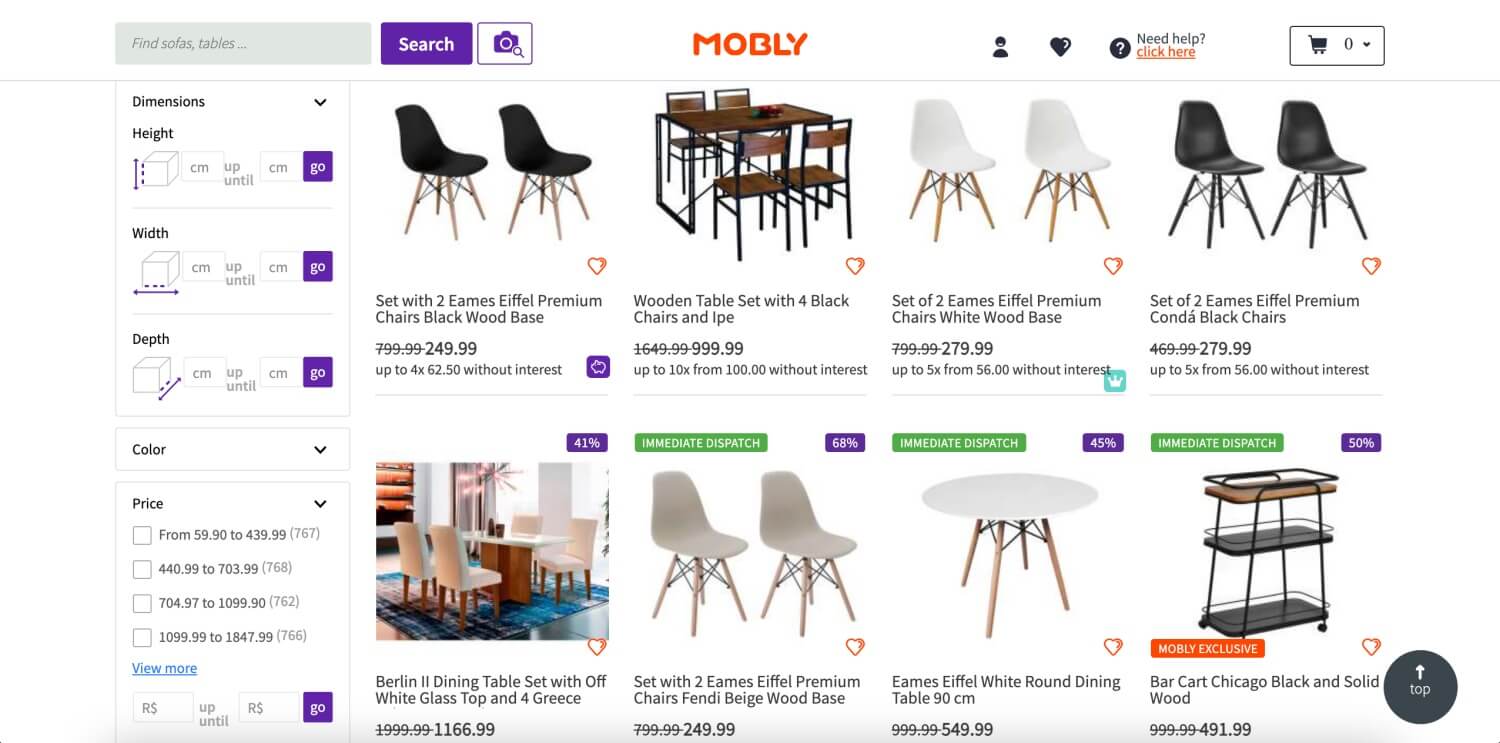
Mobly personalizes the search experience further by allowing customers to narrow down products using custom dimensions for furniture. This is the home decor equivalent of dress or shoe sizes in fashion. Like most brands and retailers, Mobly shoppers can also filter by price range, availability, promotions, features, and more.
Moving Forward With Faceted Search
Ultimately, what dictates the success of faceted search is how well it aligns with your shoppers’ behaviors and navigational preferences. Two retailers with differing customer bases may choose to highlight very different attributes, for example.
Implementing faceted search effectively and with as little disruption as possible requires a merchandising solution that captures as many attributes as possible, automatically tags them, and feeds those filters through to your search interface. The result of this investment is a much more intuitive path for shoppers to explore your catalogue and the increase in conversion and revenue that goes along with that.
By stepping into your customer’s shoes, you can create and implement an effective faceted search and navigation infrastructure that seamlessly connects your shoppers to the precise products they’re looking for.